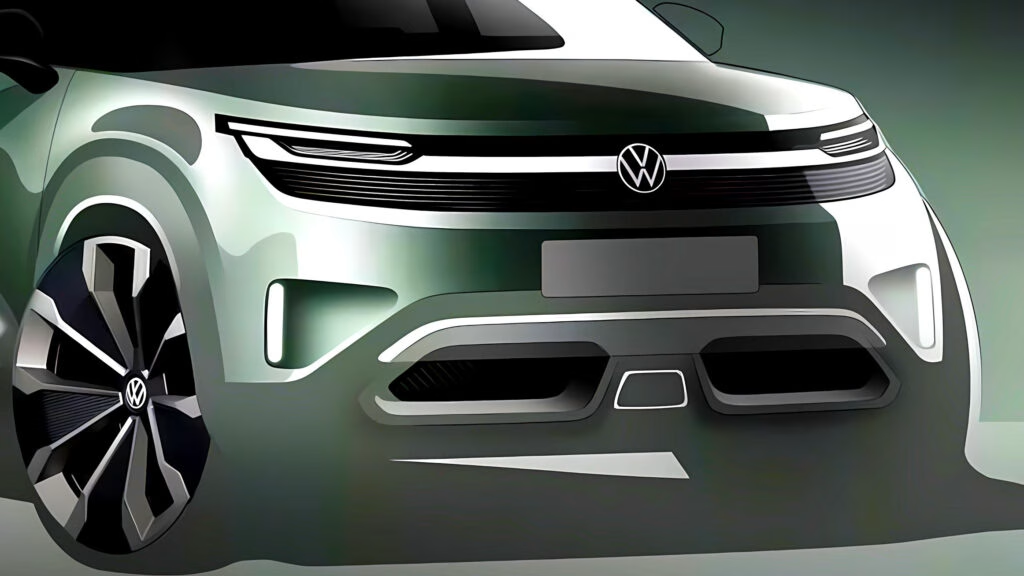What’s Volkswagen’s New Subcompact Electric SUV All About?
Volkswagen is stirring up the electric SUV scene with a fresh concept that’s turning heads before it even hits the Munich auto show floor. The brand has dropped official sketches teasing a subcompact electric SUV, and while the name’s still under wraps, the intent is crystal clear: VW wants to offer a smaller, more affordable EV that doesn’t skimp on style or presence. If you’re picturing a battery-powered sibling to the T-Cross, you’re on the money.
How Does the Design Stand Out from the Crowd?
First impressions? This little SUV punches above its weight. The design sketches, shared by VW’s head of design Andreas Mindt, show off bold, stretched proportions, oversized alloy wheels, and a stance that feels more “urban explorer” than “budget runabout.” Up front, you’ll spot slim LED headlights and a rugged skid plate—details that hint at adventure, even if most buyers will be tackling city streets rather than mountain trails.
The side profile borrows cues from the ID.Every1 concept, with sculpted fenders and a wraparound greenhouse that gives the whole thing a modern, airy vibe. Around back, full-width taillights and a futuristic diffuser with extra LEDs add a dash of drama. Of course, concept sketches tend to exaggerate—those wheels might shrink and the lighting may get toned down before production. Still, the message is clear: compact doesn’t have to mean boring.
What Platform and Tech Will Power This New VW EV?
Underneath the eye-catching skin, this SUV rides on VW’s MEB Entry platform—the same architecture set to underpin the production versions of the ID.1Every and ID.2All hatchbacks. That’s a big deal. The MEB Entry is designed specifically for smaller, more affordable electric vehicles, and it’s flexible enough to offer both front- and all-wheel-drive setups. Expect a mix of single- and dual-motor configurations, giving buyers a choice between efficiency and a bit more zip.
Production will happen at VW’s Pamplona plant in Spain, right alongside the gasoline-powered T-Cross and Taigo. This isn’t just a one-off experiment—VW’s betting big on electrifying the B-SUV segment, and the same Spanish factory will also build the closely related Skoda Epiq.
How Will Pricing Stack Up Against the Competition?
Let’s talk numbers, because that’s where things get interesting. VW’s ID.2all hatchback is targeting a starting price of €25,000 in Germany (about $27,000), including tax. The new electric SUV is expected to slot just above that, likely in the €25,000–30,000 range (roughly $27,000 to $32,000). For context, that’s right in the sweet spot for entry-level EVs in Europe, and it’s a price point that could finally make electric SUVs accessible to a much broader audience.
But VW isn’t entering an empty field. When this SUV arrives—potentially as soon as next year—it’ll be up against a crowded roster: Kia’s EV2 and EV3, the Toyota Urban Cruiser, Suzuki e-Vitara, Ford Puma Gen-E, Peugeot E-2008, Opel Mokka Electric, Jeep Avenger, Alfa Romeo Junior Elettrica, and Volvo EX30. Each brings its own flavor, but VW’s reputation for solid build quality and practical design could give it an edge.
What’s the Real-World Appeal for Everyday Drivers?
Here’s where things get practical. The subcompact SUV segment has exploded in popularity because it hits a sweet spot: small enough for city parking, but roomy enough for daily life. VW’s new EV promises to deliver that versatility, with the added bonus of zero tailpipe emissions and lower running costs.
And while the sketches are heavy on style, VW’s track record suggests the production model will focus on usability, too. Expect clever interior packaging, decent cargo space, and the kind of intuitive tech that’s become a hallmark of the brand’s latest models. If you’ve been waiting for an electric SUV that feels approachable—both in size and price—this could be the one to watch.
How Does This Fit into VW’s Broader Electric Strategy?
Volkswagen’s electric push has been gathering steam, but until now, most of its EVs have skewed larger or pricier. This new subcompact SUV signals a shift—one that’s all about democratizing electric mobility. By leveraging the MEB Entry platform and sharing production with other models, VW can keep costs down and scale up quickly.
Industry analysts have noted that affordability is the final frontier for EV adoption in Europe. According to a 2023 report from the European Automobile Manufacturers’ Association, price remains the top barrier for would-be EV buyers. By targeting the €25,000–30,000 range, VW is aiming to break through that wall and bring more drivers into the electric fold.
What Should You Watch for Next?
Keep your eyes peeled for the official debut at the Munich auto show, where VW will likely reveal more details—including a name, specs, and perhaps a closer look at the interior. If the production timeline holds, the first models could hit European roads by late next year.
The big takeaway? VW’s new subcompact electric SUV isn’t about perfection—it’s about smarter adjustments. Start with one change this week, and you’ll likely spot the difference by month’s end. Whether that means keeping an eye on the EV market, rethinking your next car purchase, or simply getting excited about where electric mobility is headed, this little SUV could be the nudge you need.

